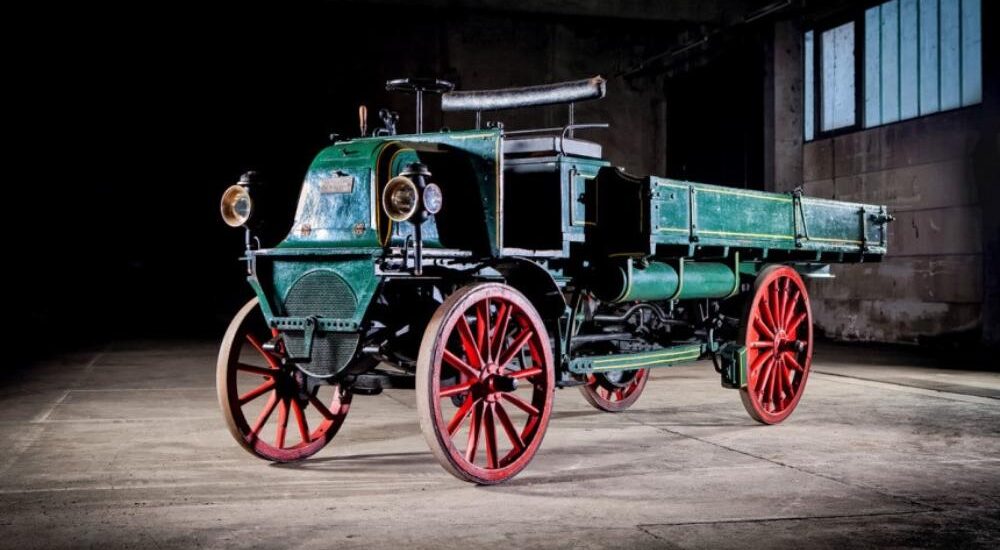In German, Kardan-Lastwagen means “propeller-shaft truck.” This particular vehicle is one of the oldest preserved trucks in the world — a Daimler dating back to 1899!
Its engine ran on gasoline purchased from a pharmacy, and its iron-clad wheels clattered loudly over cobblestones. These were the defining traits of the earliest trucks. Daimler’s first truck — essentially a motorized cart with a rear-mounted engine — appeared in 1896. But within just a few years, trucks had adopted the now-familiar layout: engine in front, followed by the cab (still open at the time), and then an open cargo bed.
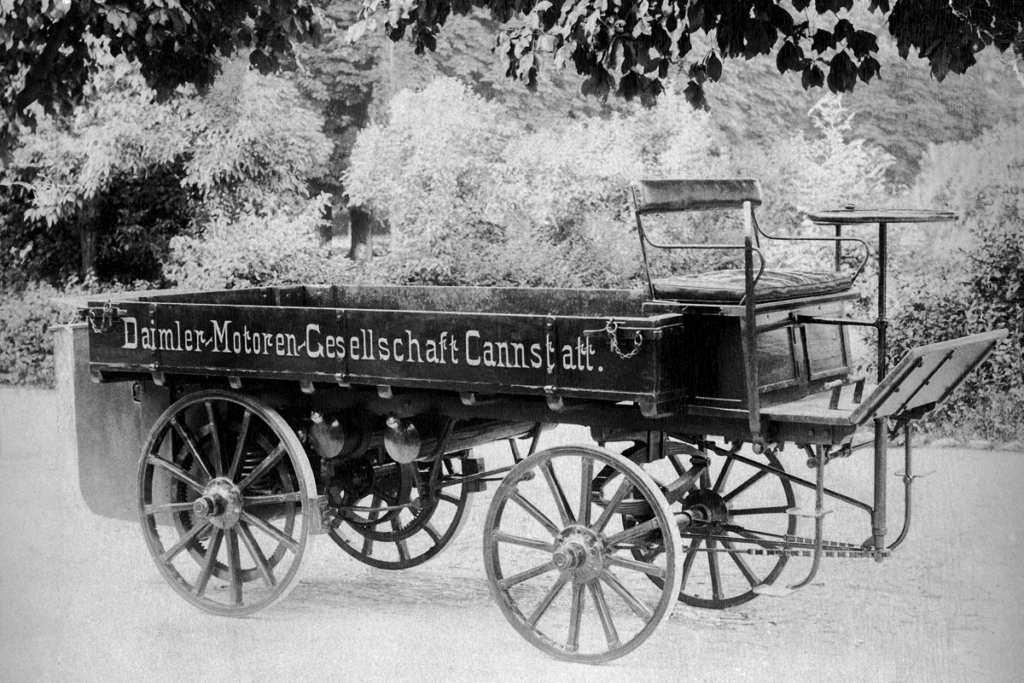
Daimler’s first truck, 1896
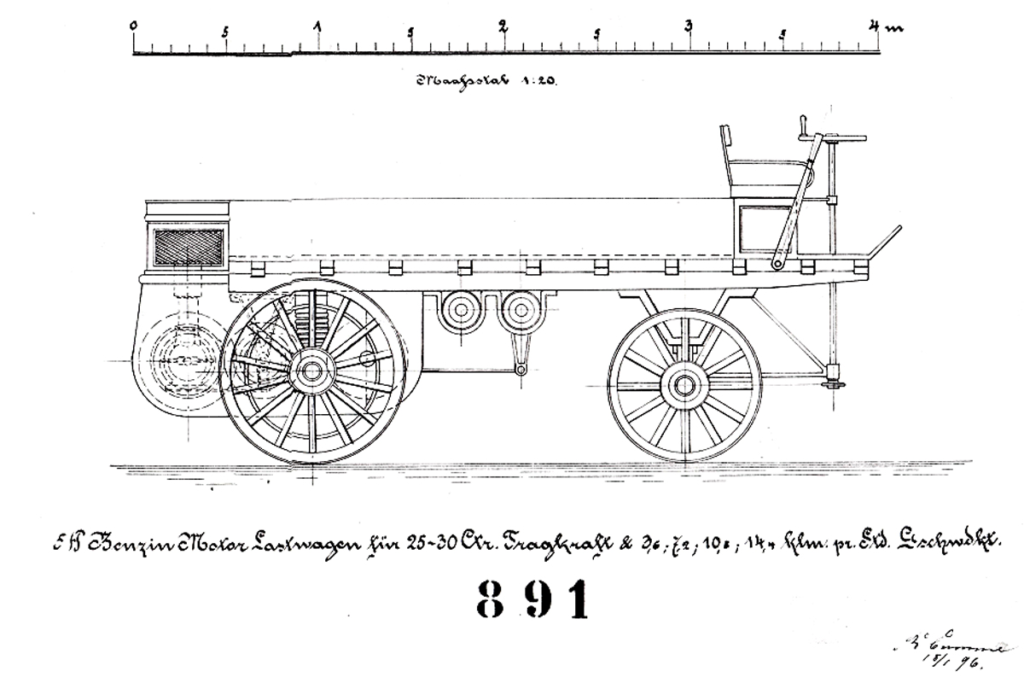
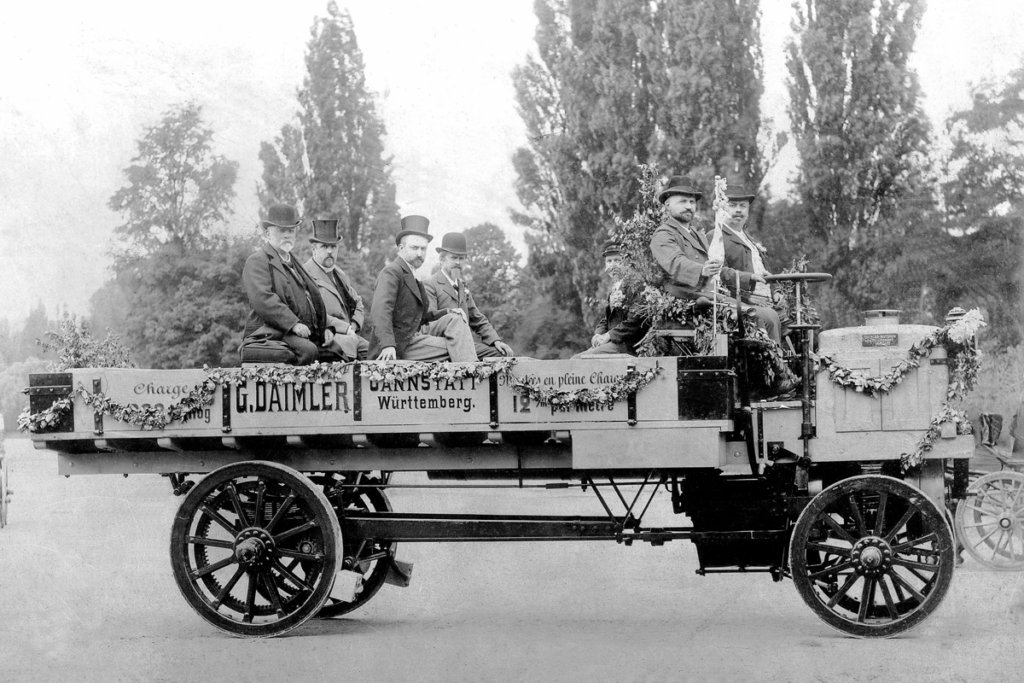
Daimler’s truck at the Paris exhibition, 1898
The Daimler truck shown in the photos belongs to the third series. It features an unusual drivetrain for its era — not chain-driven or gear-driven, but instead using a propeller shaft (cardan drive), complete with portal gear axles. The front wheels, too, used a steering mechanism more reminiscent of modern systems, rather than the chain-linked steering seen on earlier models.
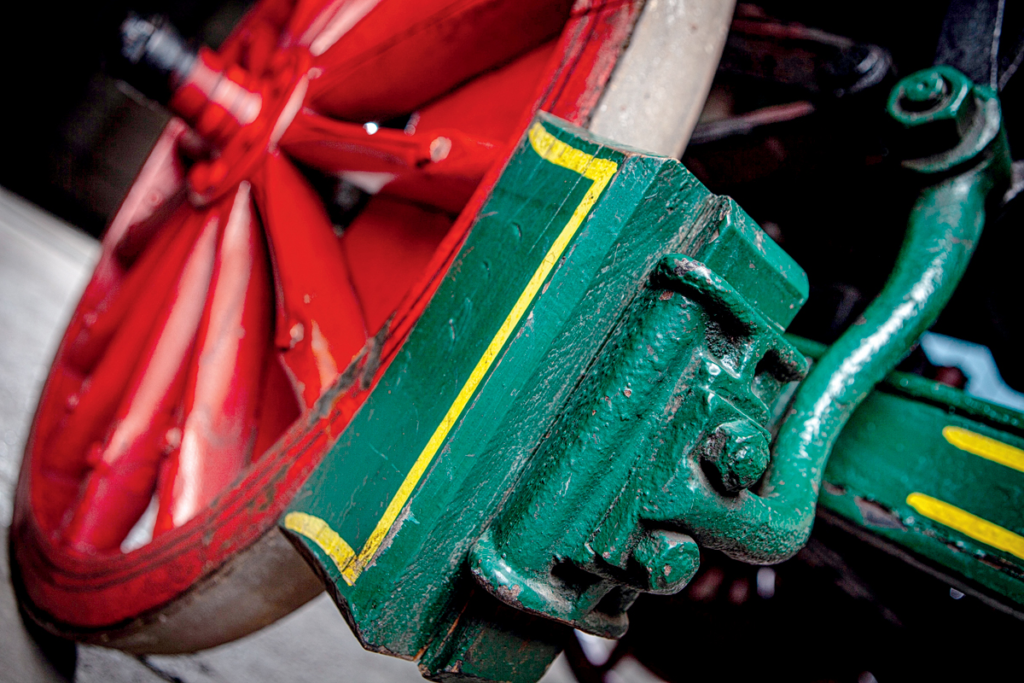
The brake pads were pressed against the rear wheels, which were covered with iron
Brakes were present — mechanical, of course — using primitive external brake shoes that pressed directly against the rear wheels. The fuel tank had an unusual shape, resembling a long cylinder mounted underneath the chassis.
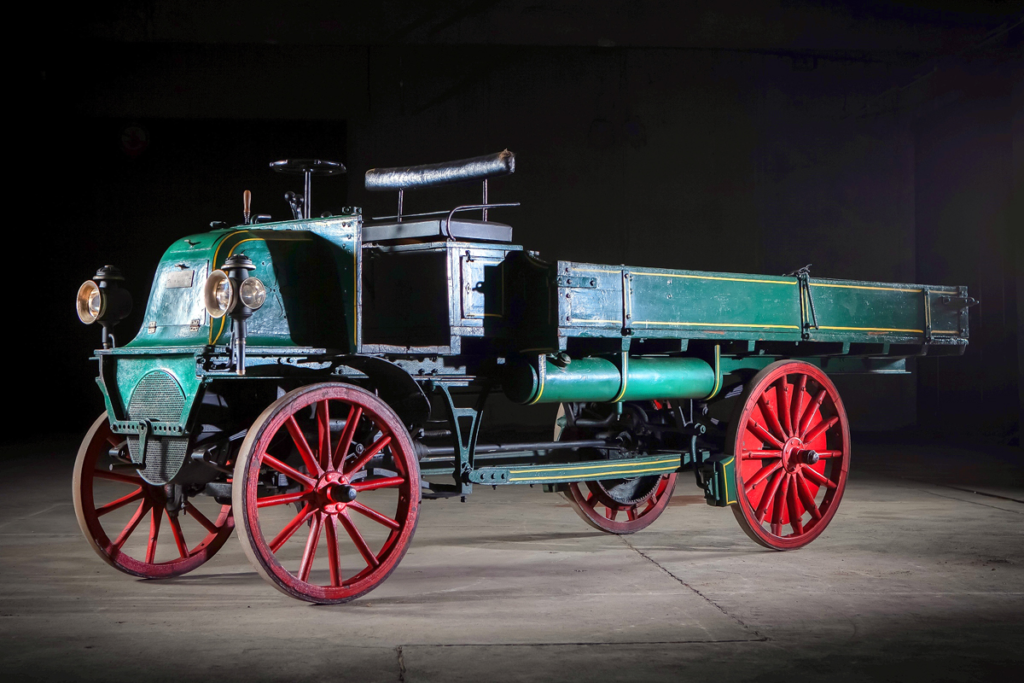
If you look at the truck, you can see the acetylene headlights, the crank handle in front of the drum radiator, and, of course, the cardan shaft. Under the body is a cylindrical fuel tank
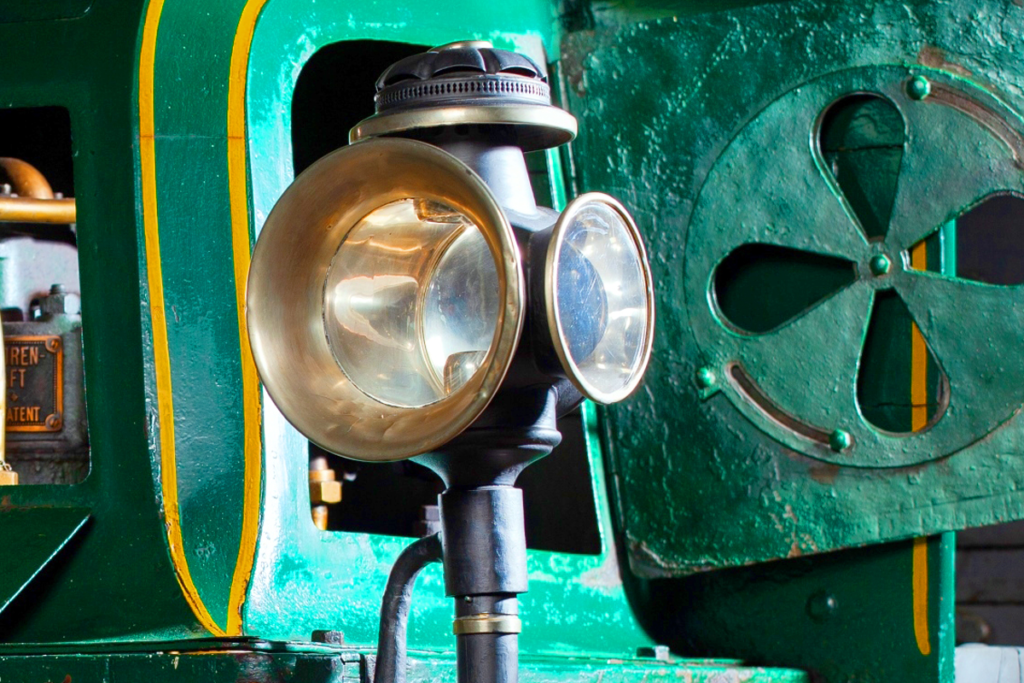
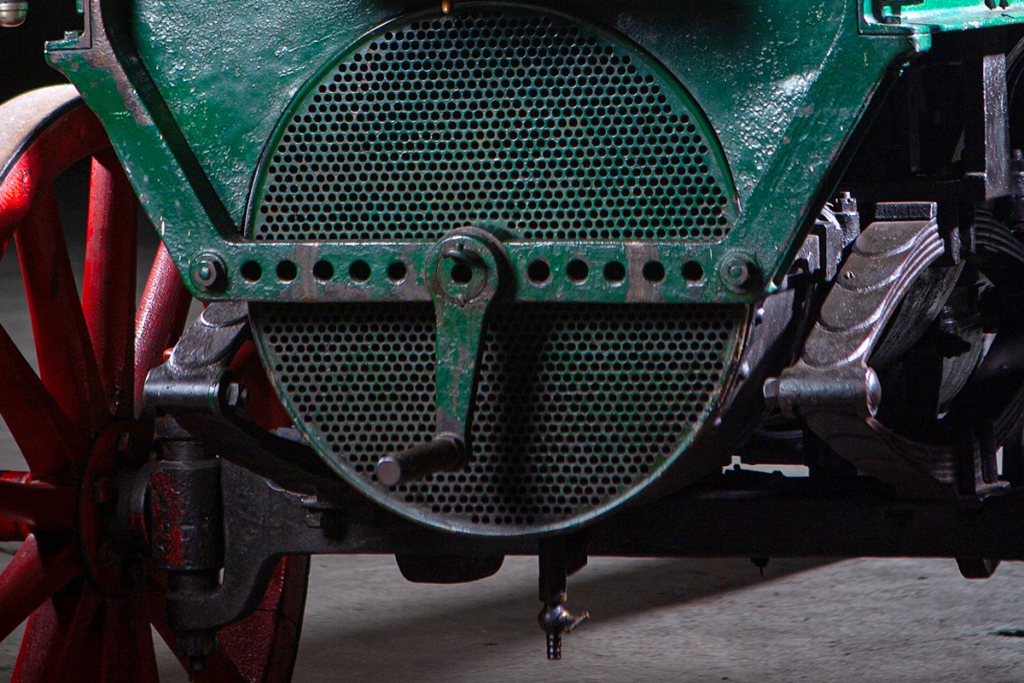
The engine was equipped with a fashionable-for-the-time tubular radiator (shaped like a large drum), and it also featured the then-novel “electric ignition” via spark plugs, rather than the more common hot tube ignition. In that older method, pipes inside the cylinders were heated with burning wood chips — resulting in a soot-covered driver and clouds of smoke that obscured vision.
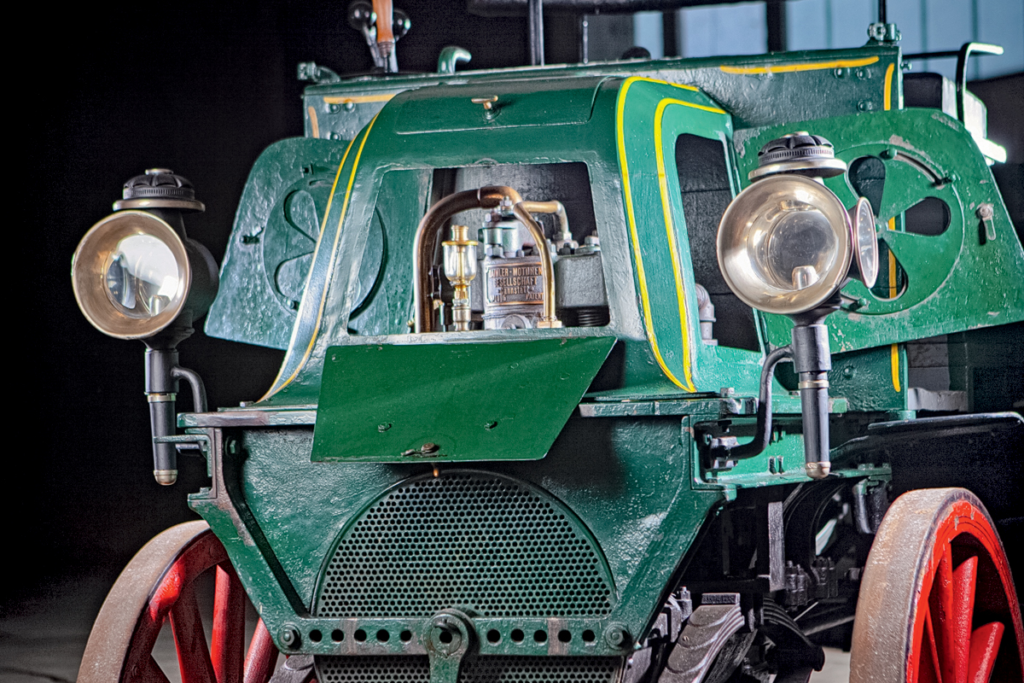
In the engine compartment is a patented Daimler petrol engine
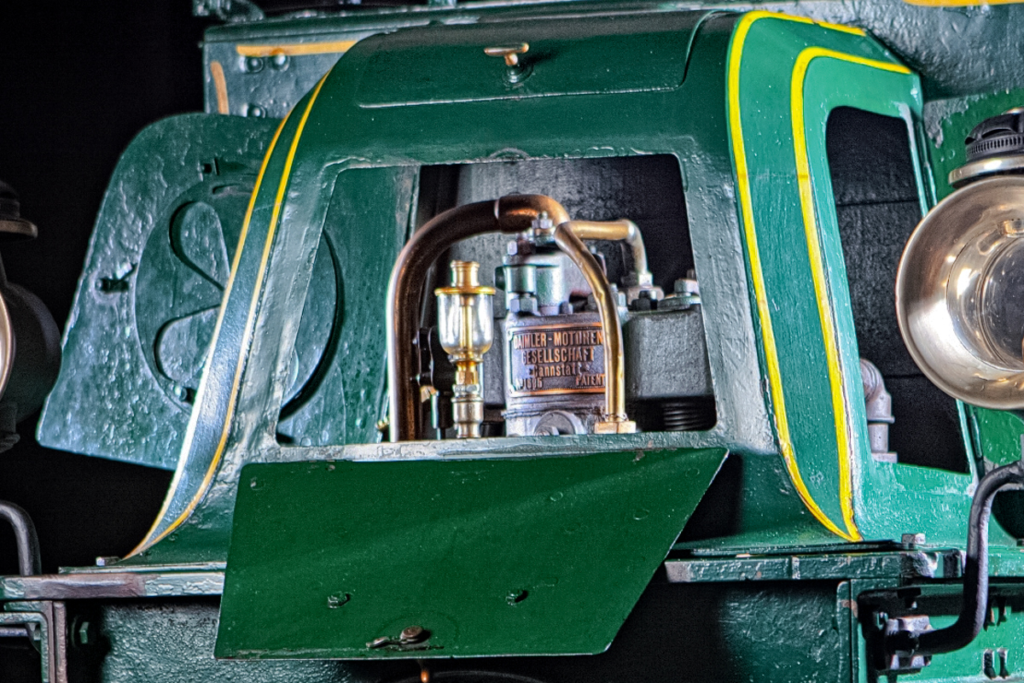
The exact engine installed in this example isn’t specified, but Daimler trucks of that era could be fitted with either two- or four-cylinder engines, producing between 4 and 12 horsepower. This determined both the load capacity (up to 5 tonnes) and the price, which ranged from 7,320 to 11,500 Deutsche Marks.
Some specs of this particular unit can be deciphered from a plate affixed to its nose:
“W. Gew. 1660 Kg” and “L. Gew. 1000 Kg” likely refer to Wagengewicht (vehicle weight) and Lastgewicht (payload),
“P.S. 5” with a small “4” likely denotes power output — 5.4 horsepower,
The meaning of “M. № 1695” remains unclear — it could stand for Model Number or Manufacturing Number. However, it’s worth noting that Daimler had produced only around 200 vehicles (including passenger cars and buses) before 1900.
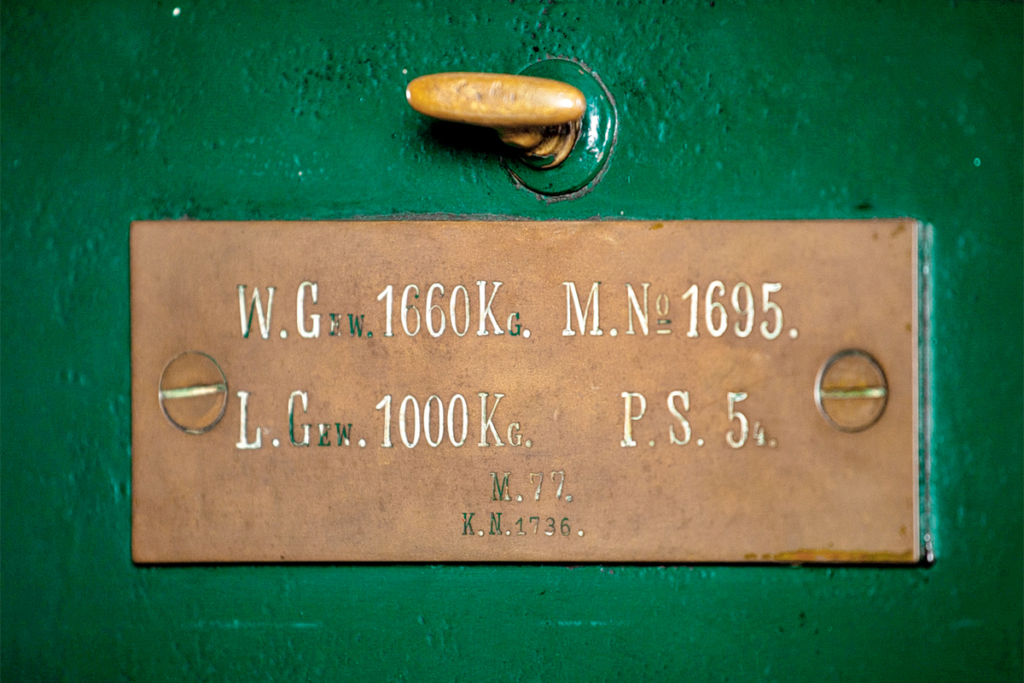
Sign on the hood
According to factory records, this truck was delivered on March 11, 1899, to a public utility in Stuttgart — the local waterworks, essentially the equivalent of a municipal water and sewer department. A surviving photo from the time shows a massive toolbox mounted on the bed, complete with a vise, pipe cutter (the pipes were metal), and a thread tap. The truck remained in service until 1923, after which it was replaced by a newer model. It then returned to Daimler for preservation in what would become the company’s museum collection.
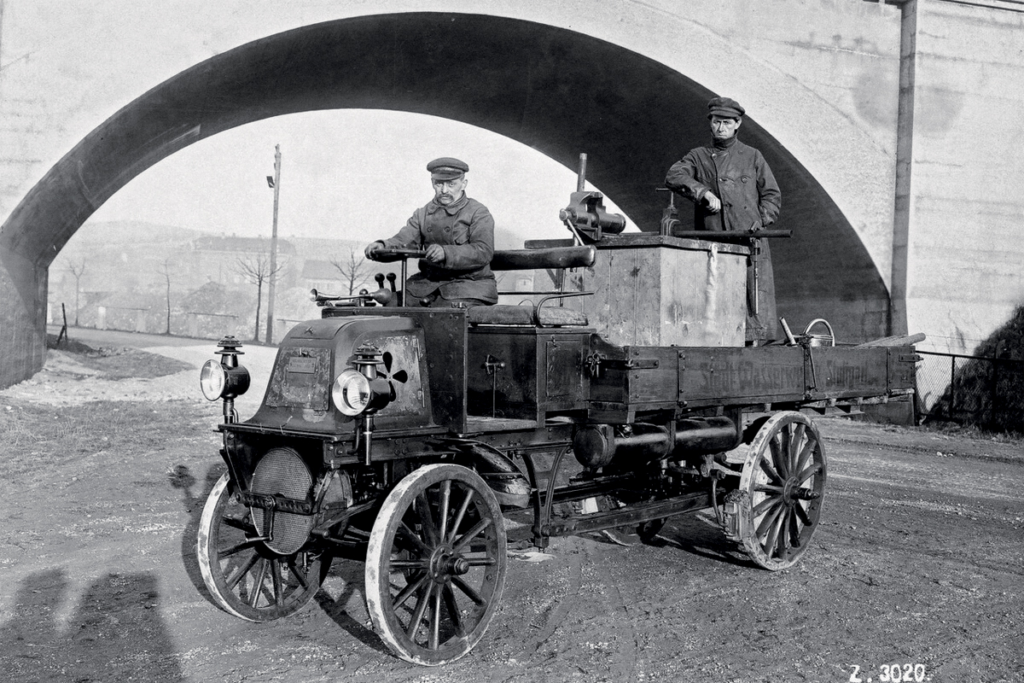
A truck during work at the Stuttgart water supply service
In 1944, as Allied bombing raids targeted Stuttgart, part of the collection was moved to Dresden, in East Germany. The unique vehicle remained there, in the Dresden Transport Museum, until 1991 — despite numerous attempts by Daimler-Benz to retrieve it during the GDR era.
Only after German reunification were 16 historic vehicles returned to Daimler. Since then, the truck has been housed in Mercedes-Benz’s private heritage collection. It is occasionally brought out for special events — including the 125th anniversary of the first Daimler truck, held in London in 2021 (the first Daimler truck, incidentally, was purchased by a British customer).
To mark the occasion, the company sent a transporter carrying two vintage trucks: a replica of Daimler’s original 1896 truck (built in 1990 at a cost of 100,000 Deutsche Marks) and the historic Kardan-Lastwagen. Incidentally, the Mercedes-Benz Museum in Stuttgart also houses another original Daimler truck from that era — one that’s even older, built in 1898.
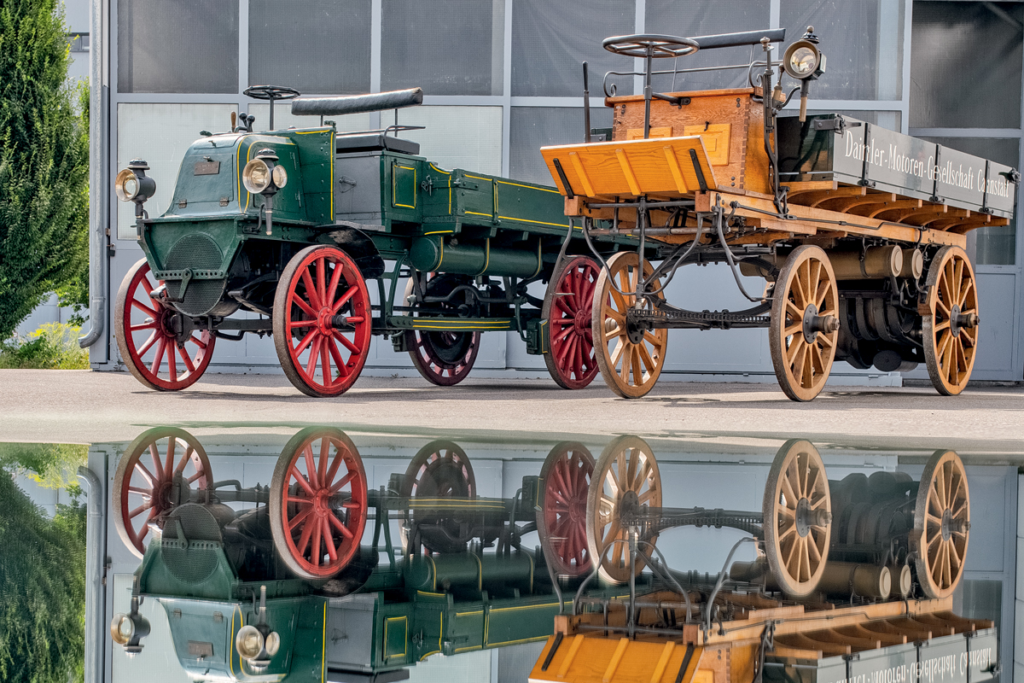
A Kardan-Lastwagen from 1899 next to a replica of Daimler’s first truck from 1896
As for the oldest original truck still in existence in Russia — that title goes to a pre-revolutionary German Magirus 3K1, manufactured in 1912. This historic vehicle is kept at Mosfilm Studios and is still in working condition. Since the 1970s or ’80s, it has appeared in numerous films. In 2023, it underwent restoration: repairs were made, new windshields installed, and its brass fittings polished. Remarkably, it still wears its original rubber tires. According to some accounts, the vehicle originally served as a fire truck.
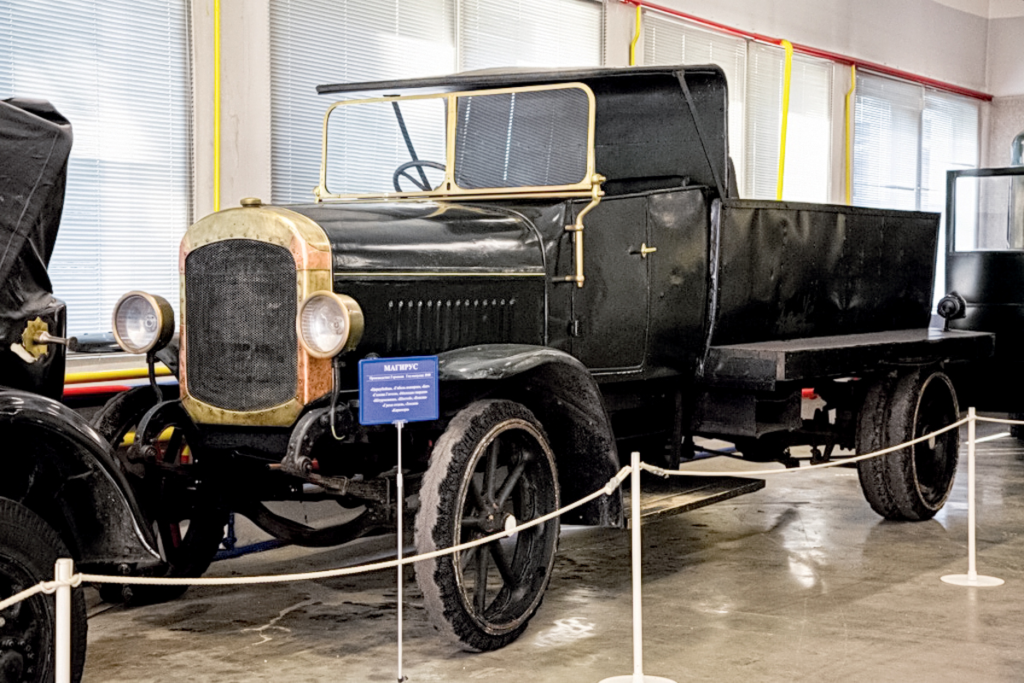
The oldest surviving truck in Russia is the 1912 Magirus 3K1 (photo: Mosfilm)
Photo: Daimler Truck
This is a translation. You can read the original article here: Кардан-ластваген: рассказываем про один из самых ранних сохранившихся грузовиков Daimler

Published June 12, 2025 • 4m to read

